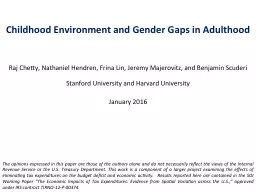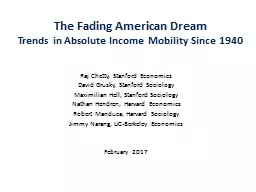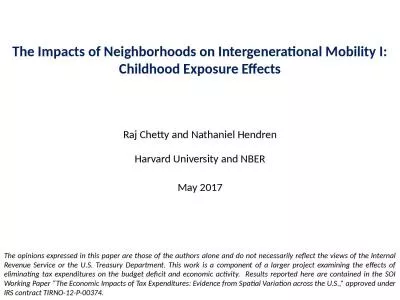PPT-Raj Chetty , Nathaniel
Author : calandra-battersby | Published Date : 2018-03-19
Hendren Frina Lin Jeremy Majerovitz and Benjamin Scuderi Stanford University and Harvard University January 2016 Childhood Environment and Gender Gaps in Adulthood
Presentation Embed Code
Download Presentation
Download Presentation The PPT/PDF document "Raj Chetty , Nathaniel" is the property of its rightful owner. Permission is granted to download and print the materials on this website for personal, non-commercial use only, and to display it on your personal computer provided you do not modify the materials and that you retain all copyright notices contained in the materials. By downloading content from our website, you accept the terms of this agreement.
Raj Chetty , Nathaniel: Transcript
Download Rules Of Document
"Raj Chetty , Nathaniel"The content belongs to its owner. You may download and print it for personal use, without modification, and keep all copyright notices. By downloading, you agree to these terms.
Related Documents














